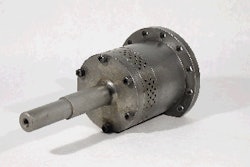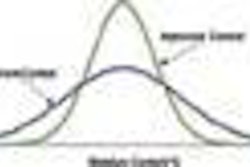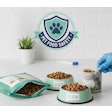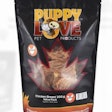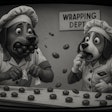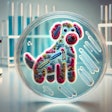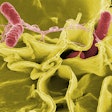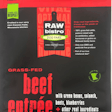Extrusion is a complex process that can affect the palatability and nutritional value of petfoods. During extrusion, ingredients are cooked by a combination of moisture, pressure, temperature and mechanical shear. Degree of cook and product density both affect palatability. Processing temperature affects nutrient levels, vitamins in particular.
Adding nutritional "power" to petfoods has become increasingly important as greater attention is focused on the bioavailability of nutrients. Extrusion, in general, helps add nutritional power. However, you must continually monitor extrusion processing variables that may alter palatability.
Adequate or optimum?
You can have adequate or optimum palatability. You can have adequate or optimum nutrition. You can have adequate or optimum extrusion.
Voluntary feed consumption is partially driven by palatability factors. Optimum nutrition is directly driven by feed consumption. Optimum extrusion improves palatability and nutrient utilization.
If an animal deems a food undesirable, he may not consume it if he's very hungry. If an animal deems a food very desirable, he may consume more of it even if he is not hungry. This applies to humans as well. You will eat more of something if it's desirable, even if your body physiologically doesn't need it.
How is this controlled? There is a small organ at the base of the brain called a hypothalamus. What we call the "feeding center" is in the lateral side of the hypothalamus. If you stimulate it, an animal will eat more food, hungry or not. If you damage or block that stimulation, an animal won't eat. They'll eventually die.
Internal and external factors
An animal's nervous system receives input from many internal and external signals about hunger and diet. Palatability factors include sight, smell, touch and odor. The palatability of petfoods is primarily affected by ingredient selection, formulation and processing. Other factors that affect consumption include:
- Genetics;
- Gender;
- Metabolizable energy content of the diet;
- Physical form of the diet;
- Bulk density of the diet;
- Environmental temperature (if cold, an animal will eat more);
- Energy concentration in the diet;
- Physical form of the diet;
- Hormonal balance;
- Season of the year (in non-confined animals, the photoperiod, temperature, humidity and rainfall);
- Use of lights (confined animals);
- Gastrointestinal tract capacity;
- Rate of passage; and
- Management practices.
Appetite refers to internal factors which stimulate hunger in an animal. Overall control of appetite is related to feedback from the gut, blood chemistry and temperature (distension, chemical and thermostatic receptors) and the central nervous system activating feeding behavior.
Optimum extrusion adds value
Through extrusion, we want to add value to the ingredients. Table 1 shows starch fractions of uncooked and extruded dog food ingredients. It shows the effects of low and high temperature extrusion. In general, extrusion increases the level of rapidly digested starch and decreases the levels of slowly digestible and resistant starches. We know optimum extrusion gets more nutrients to the blood and there's real value in that.
How do you achieve optimum processing? One is preconditioning. It pays off in two ways: It lowers the cost of extrusion and it gelatinizes starch. Another is proper control of the extruderautomated systems help here. Extrusion automation is now one of the most effective means for improving process efficiency. A properly automated extruder can run the extruder right up to the budgeted rate and keep it there, around the clock.
Drying and the final moisture content of the extruded diet are also important. If moisture content is too high and/or you store the petfood for too long, it will mold and palatability decreases. If processed correctly, petfood palatability improves. On the other hand, if it is not done correctly, palatability can decrease.
Looking at 17 different papers on extrusion, 15 of the 17 were with pigs, two were with chicks. Out of the 15 with pigs only two of those particular studies show a negative response in gain efficiencya reduction in value of energy in the diets for the animal. Efficiency of gainagain, there were only two of those that came in with negative. Out of 15 studies, there were 11 that showed positive effects. Two were equal. In broiler chicks, both studies showed positive responses with extruded soybeans.
Nutrition power
Generally, all animals will consume food to meet metabolic needs for energy expenditures. However, there can be other factors involved, such as extreme weather conditions and stress from crowding. Still usually, animals will consume food first to meet an energy need. Energy, water and air are priorities for the body.
The importance of extrusion of petfoods and other animal feedstuffs to improve energy and nutrient utilization is well recognized. Optimum extrusion can increase the nutrition power of petfoods by increasing palatability and nutrient utilization.
References
Available upon request. Contact Dorothy Randecker at E-mail: [email protected] or Tel: +1.815.734.5645.

